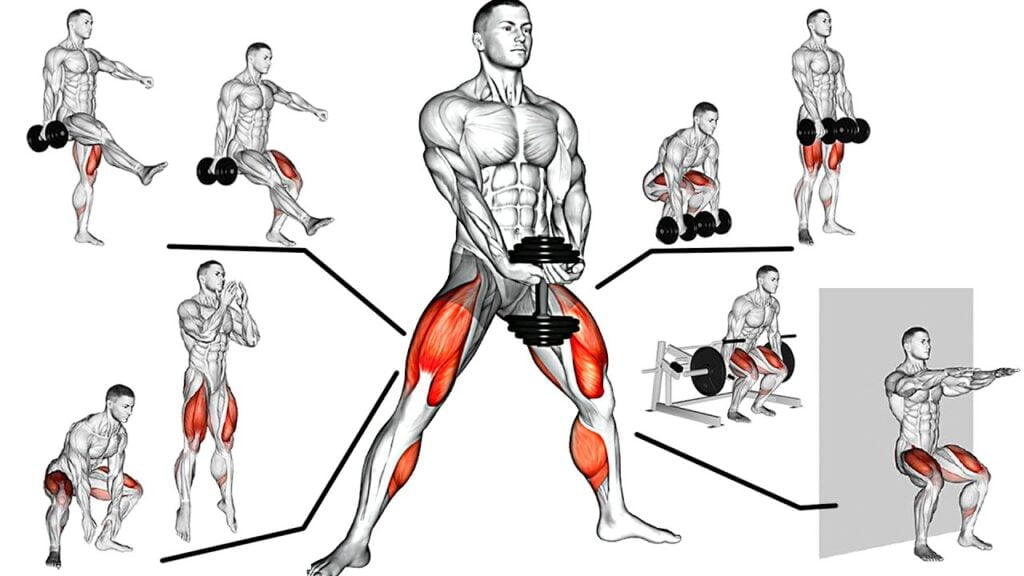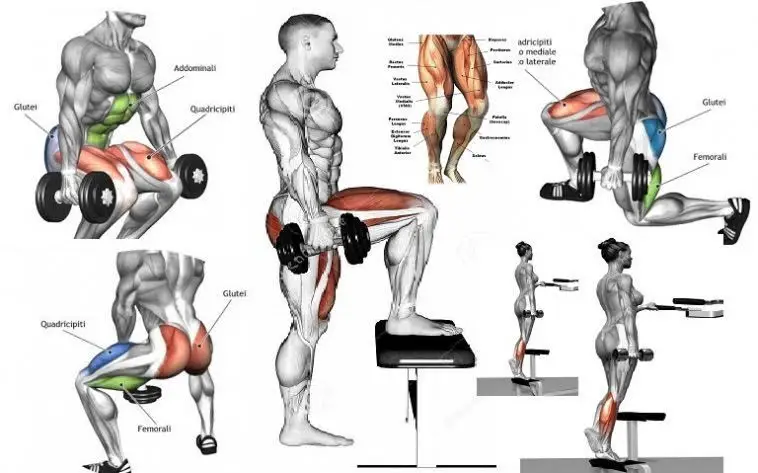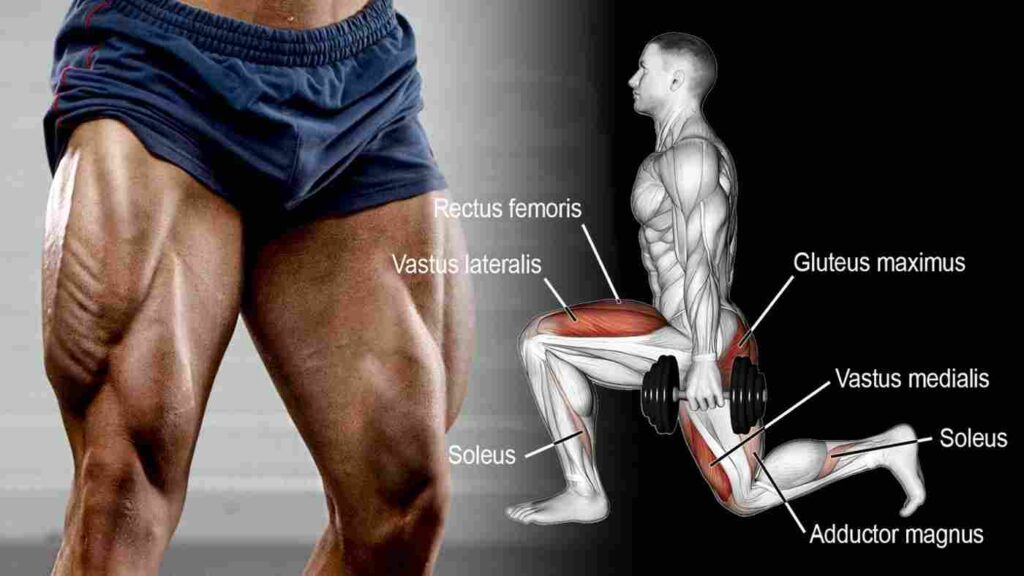Introduction
Are you tired of dealing with sore and achy legs after a tough workout or a long day of physical activity? Leg soreness is a common issue that many individuals face, whether they are athletes, fitness enthusiasts, or just individuals leading an active lifestyle. The good news is that there are effective ways to alleviate leg soreness and improve flexibility, and that’s through incorporating targeted leg stretches into your daily routine.
SHOP FOR THE FOAM ROLLER ON AMAZON
In this comprehensive guide, we will delve into the world of leg stretches for soreness, exploring the science behind why they work, the various stretching techniques you can use, and how to create a personalized stretching plan. By the end of this article, you’ll be equipped with the knowledge to create a targeted stretching routine that can help you bid farewell to sore legs and welcome enhanced mobility and comfort.
Importance of stretching for sore legs
When you experience leg soreness, it is often a result of muscle tightness, micro-tears in the muscle fibers, or the buildup of lactic acid after intense physical activity. Stretching is a powerful tool that can help alleviate these issues and offer various benefits:
SHOP FOR THE COMPRESSION SLEEVES ON AMAZON
- Stretching increases blood flow to the muscles, promoting faster recovery and reducing soreness.
- It helps to alleviate muscle tension and tightness, which can contribute to leg soreness.
- Regular stretching improves flexibility and range of motion, reducing the risk of muscle strains and injuries.
- Stretching releases endorphins, natural pain-relieving chemicals that can ease soreness and discomfort.
- It prevents muscle imbalances that may arise from the overuse of certain muscles, leading to less soreness.
- Incorporating stretching into your routine can improve overall muscle function, making your legs less susceptible to soreness after physical activities.
- Stretching aids in the removal of waste products and toxins from muscles, which can build up during exercise and cause soreness.
- It promotes relaxation and reduces muscle stiffness, helping you feel more comfortable and at ease with sore legs.
- Stretching before and after workouts can help prevent delayed onset muscle soreness (DOMS) by preparing the muscles for activity and facilitating recovery afterward.
- Engaging in regular stretching can contribute to better posture and alignment, reducing the strain on your legs and minimizing soreness.
Common causes of soreness in the legs
Leg soreness can be caused by various factors, ranging from everyday activities to medical conditions. Below are some common causes of soreness in the legs:
- Physical Exercise: Engaging in intense physical activities, such as running, cycling, weightlifting, or sports, can lead to muscle soreness in the legs. This type of soreness is often referred to as Delayed Onset Muscle Soreness (DOMS) and typically occurs within 24 to 48 hours after exercise.
- Overexertion: Pushing the muscles beyond their usual limits, either due to excessive exercise or lifting heavy objects, can cause leg soreness and fatigue.
- Poor Posture: Maintaining an incorrect posture while sitting, standing, or walking can strain the leg muscles, leading to soreness over time.
- Muscle Cramps and Spasms: Sudden, involuntary muscle contractions can cause acute pain and soreness in the legs. Cramps may result from dehydration, electrolyte imbalances, or muscle fatigue.
- Injuries: Trauma to the legs, such as sprains, strains, or fractures, can cause localized soreness and discomfort.
- Prolonged Sitting or Standing: Remaining sedentary for extended periods, whether sitting at a desk or standing for long hours, can result in stiffness and soreness in the legs.
- Aging: As individuals age, muscle elasticity and strength tend to decrease, making them more prone to leg soreness and stiffness.
- Peripheral Artery Disease (PAD): PAD is a condition where there is reduced blood flow to the legs due to narrowed arteries. It can cause leg cramps, pain, and soreness, especially during physical activity.
- Deep Vein Thrombosis (DVT): DVT is a blood clot that forms in a deep vein, commonly in the legs. It can cause swelling, pain, and soreness in the affected leg.
- Restless Leg Syndrome (RLS): RLS is a neurological disorder characterized by an irresistible urge to move the legs, often accompanied by discomfort and soreness.
- Nerve Compression: Conditions like sciatica, where the sciatic nerve is compressed or irritated, can cause leg pain and soreness.
SHOP FOR THE MUSCLE ROLLER STICK ON AMAZON
It’s essential to identify the specific cause of leg soreness to determine the appropriate treatment and preventive measures.
The Science Behind Leg Stretches
Leg stretches are not just a series of random movements; they are based on the principles of anatomy, physiology, and biomechanics. Understanding the science behind leg stretches can help us appreciate their effectiveness in alleviating soreness, improving flexibility, and promoting overall leg health.
Muscle Anatomy and Physiology
To comprehend leg stretches fully, it’s crucial to have a basic understanding of the muscles involved. The legs are composed of several major muscle groups, including:
a. Quadriceps: Located in the front of the thighs, the quadriceps are responsible for knee extension and play a vital role in activities such as walking, running, and jumping.
b. Hamstrings: The hamstrings are located at the back of the thighs and are responsible for knee flexion and hip extension. They are heavily engaged during activities like running and bending.
c. Calves: The calf muscles, including the gastrocnemius and soleus, enable ankle plantar flexion, providing the force necessary for activities such as walking and running.
d. Adductors: Situated on the inner thighs, the adductors are responsible for bringing the legs together and play a crucial role in stability and balance.
e. IT Band (Iliotibial Band): The IT band runs along the outer side of the thigh and is involved in stabilizing the knee during movement.
Leg stretches help alleviate leg soreness by promoting increased blood flow to the muscles and improving their flexibility. When muscles are sore, they can become tight and stiff. Stretching gently elongates the muscle fibers, reducing tension and promoting relaxation.
SHOP FOR THE MASSAGE BALL ON AMAZON
Moreover, stretching encourages the release of endorphins, which are natural pain-relieving hormones. This combination of increased blood flow, enhanced flexibility, and pain relief contributes to the effectiveness of leg stretches in relieving soreness and promoting faster recovery.
Effective Leg Stretches for Soreness
Sore legs can be quite uncomfortable and hinder your daily activities. Whether it’s due to intense workouts, prolonged sitting, or muscle imbalances, incorporating leg stretches into your routine can significantly alleviate soreness and improve flexibility.
Static Stretches for Sore Legs
Static stretches involve holding a position for an extended period, typically around 20-30 seconds. These stretches help relax and lengthen the muscles, providing relief from soreness and increasing flexibility.
a. Quadriceps Stretch:
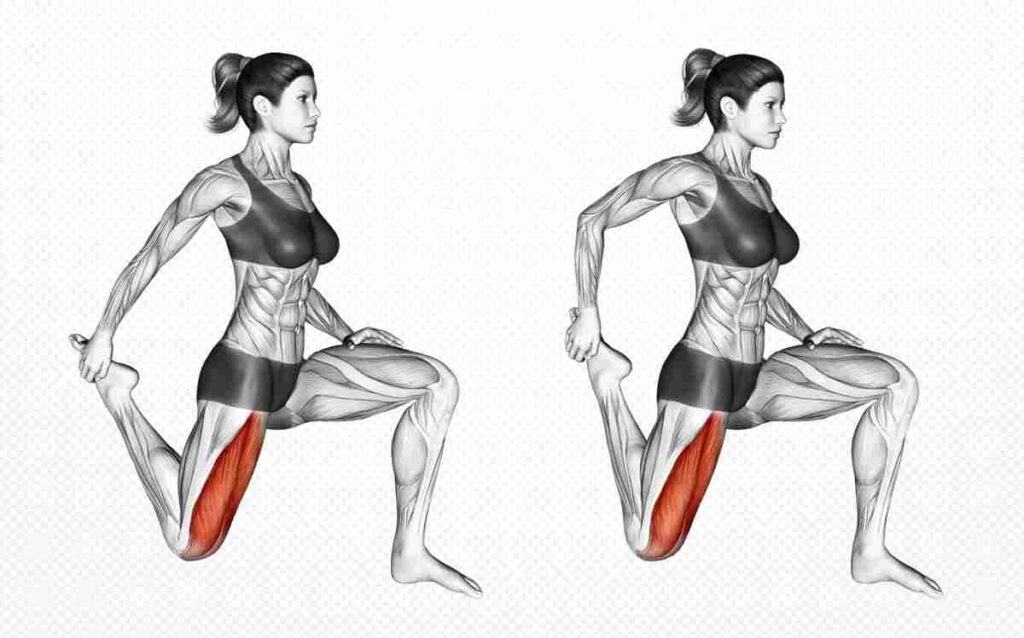
- Stand tall with your feet hip-width apart.
- Bend one knee and bring your heel towards your buttocks.
- Hold your ankle with the corresponding hand to stabilize the stretch.
- Gently pull your ankle towards your buttocks until you feel a stretch in the front of your thigh.
- Hold the stretch for 20-30 seconds, then switch to the other leg.
b. Hamstring Stretch:
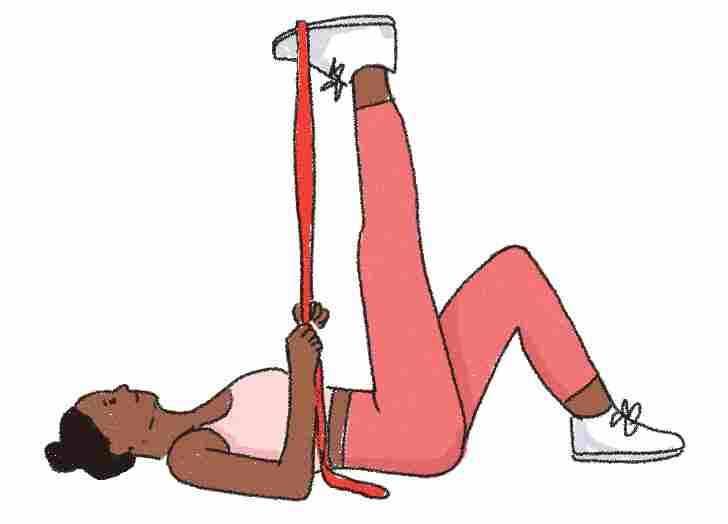
- Sit on the floor with one leg extended straight in front of you.
- Bend the opposite knee and place the sole of your foot against the inner thigh of the extended leg.
- Lean forward from your hips and reach toward your toes.
- Keep your back straight and avoid rounding your spine.
- Hold the stretch for 20-30 seconds on each leg.
c. Calf Stretch:

- Stand facing a wall and extend one leg behind you.
- Keep your back leg straight and press the heel into the floor.
- Lean forward slightly, placing your hands on the wall for support.
- You should feel a stretch in your calf muscle.
- Hold the stretch for 20-30 seconds and then switch to the other leg.
d. Adductor Stretch:
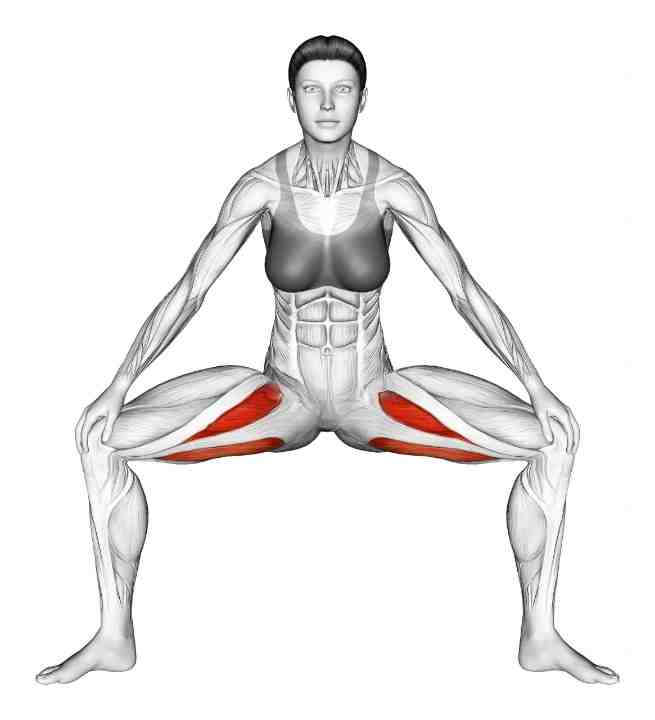
- Sit on the floor and bring the soles of your feet together in front of you.
- Hold your feet with your hands and gently press your knees towards the floor.
- You should feel a stretch in your inner thighs.
- Hold the stretch for 20-30 seconds.
e. IT Band Stretch:
- Stand with your feet shoulder-width apart.
- Cross your right leg in front of your left leg.
- Lean to the left, reaching your right arm over your head.
- You should feel a stretch along the outer side of your right leg.
- Hold the stretch for 20-30 seconds on each side.
PNF Stretches for Muscle Pain Relief
PNF stands for Proprioceptive Neuromuscular Facilitation. It involves a combination of stretching and contracting the targeted muscle group to enhance flexibility and alleviate muscle pain.
a. PNF Technique and Its Benefits:
- Proprioceptive Neuromuscular Facilitation (PNF) involves alternating between stretching and contracting muscles.
- PNF stretching increases flexibility and helps in muscle pain relief.
- It improves the range of motion and enhances muscle coordination.
b. PNF Hamstring Stretch:
- Lie on your back with one leg extended and the other lifted towards the ceiling.
- Use a resistance band or towel to hold your lifted leg.
- Gently pull your leg towards your head while pushing against the band or towel for resistance.
- Hold the stretch for 5-7 seconds, release, and repeat 2-3 times on each leg.
c. PNF Quadriceps Stretch:
- Lie on your stomach with your elbows bent, supporting your upper body.
- Bend one knee and bring your heel towards your buttocks.
- Hold your ankle with the corresponding hand.
- Press your ankle into your hand while pushing your hip into the floor.
- Hold for 5-7 seconds, release, and repeat 2-3 times on each leg.
Active Isolated Stretches for Improved Circulation
Active isolated stretching involves holding a stretch for only 2-3 seconds and then releasing it. This method promotes better circulation, increases flexibility, and reduces muscle soreness.
a. How Active Isolated Stretching Works:
Active isolated stretching focuses on the principle of reciprocal inhibition. When one muscle contracts, its antagonist muscle automatically relaxes, allowing for a deeper stretch and greater flexibility.
b. Active Isolated Stretches for the Calves and Thighs:
Calves Stretch:
- Stand facing a wall with one leg forward and the other back.
- Keep your back leg straight, and bend your front knee slightly.
- Lean into the wall, stretching your back calf.
- Hold for 1-2 seconds and then release. Repeat 10-15 times on each leg.
Thighs Stretch:
- Stand straight and hold onto a chair or wall for support.
- Bend one knee and bring your heel towards your buttocks.
- Grasp your ankle with your hand and keep your knees close together.
- Hold for 1-2 seconds, release, and repeat 10-15 times on each leg.
Additional Tips for Leg Pain Relief
In addition to incorporating leg stretches into your routine, there are several other tips and techniques that can help provide relief from leg pain and soreness. These methods can complement your stretching efforts and promote overall leg health. Let’s explore some additional tips for leg pain relief:
SHOP FOR THE STRETCHING STRAP ON AMAZON
- Rest and Recovery: Adequate rest is crucial for muscle recovery and reducing leg soreness. After intense workouts or activities that strain your legs, make sure to allow sufficient time for them to recover. Avoid overtraining, as it can lead to increased soreness and potential injuries.
- Heat and Ice Therapy: Applying heat to sore muscles can help increase blood flow and promote relaxation. Consider using a heating pad or taking a warm bath to soothe your legs. On the other hand, ice therapy can be beneficial for acute injuries or inflammation. Apply an ice pack wrapped in a cloth to the affected area for around 15-20 minutes several times a day.
- Elevate Your Legs: If you experience swelling or fluid retention in your legs, elevating them can help reduce the swelling and improve circulation. Prop your legs up on pillows while lying down or rest your legs on an elevated surface for a few minutes each day.
- Compression Garments: Compression socks or sleeves can improve blood flow and reduce swelling in the legs. They can be particularly helpful for individuals who stand or sit for extended periods, athletes, or those prone to circulation issues.
- Proper Footwear: Wearing supportive and comfortable footwear can make a significant difference in leg pain relief. Shoes that provide adequate cushioning and arch support help reduce stress on your leg muscles and joints, especially during physical activities.
- Gentle Massages: Regularly massaging your legs can alleviate muscle tension and soreness. You can use your hands or a foam roller to gently massage the affected muscles. If possible, consider seeking a professional massage therapist to target specific areas of tension.
- Hydration: Staying well-hydrated is essential for overall muscle health. Dehydration can lead to muscle cramps and increased soreness. Make sure to drink enough water throughout the day, especially if you engage in physical activities.
- Low-Impact Exercises: If your legs are sore, avoid high-impact exercises that may exacerbate the pain. Instead, opt for low-impact activities like swimming, cycling, or yoga, which can promote blood flow and aid in muscle recovery.
- Anti-Inflammatory Foods: Incorporating anti-inflammatory foods into your diet can help reduce inflammation and alleviate leg pain. Foods rich in omega-3 fatty acids, such as fatty fish and chia seeds, as well as fruits and vegetables with high antioxidant content, are beneficial for reducing inflammation.
- Proper Posture: Maintaining good posture throughout the day can prevent muscle imbalances and reduce strain on your legs. Be mindful of your sitting and standing posture, and consider using an ergonomic chair or standing desk if you have a sedentary job.
SHOP FOR THE FOOT MASSAGER ON AMAZON
Remember that while these tips can provide relief from mild leg soreness, persistent or severe leg pain should be evaluated by a healthcare professional. They can help identify the underlying cause of your leg pain and provide personalized advice and treatment options.
FAQs
Q.1 Can leg stretches worsen soreness?
Answer: In general, properly performed leg stretches should not worsen soreness. However, if you push yourself too hard or perform stretches with incorrect form, it can lead to additional strain and discomfort. Start with gentle stretches and gradually increase intensity as your muscles loosen up and become more flexible.
Q.2 Is it normal to feel discomfort during stretching?
Answer: Yes, it is normal to feel some mild discomfort during stretching, especially if you are targeting sore muscles. However, you should never feel sharp pain. Discomfort should be manageable and should ease as you hold the stretch. If you experience intense pain, stop immediately and consult a healthcare professional.
Q.3 When is the best time to stretch for sore legs?
Answer: Stretching can be beneficial at different times. Some people find it helpful to stretch their sore legs before engaging in physical activity, as it can improve circulation and flexibility. Others prefer stretching after exercise to aid in muscle recovery. Experiment with both approaches and see what works best for you.
Q.4 How long should I hold each stretch?
Answer: The duration of each stretch can vary depending on the type of stretch and your comfort level. In general, holding a static stretch for 20-30 seconds is a good starting point. For PNF stretches, hold the contraction phase for about 5 seconds and then relax into a deeper stretch for 20-30 seconds. Listen to your body and avoid overstretching.
Q.5 Can stretching prevent leg injuries?
Answer: Regular stretching can contribute to injury prevention by improving flexibility, balance, and range of motion. When muscles are flexible and supple, they are less prone to strains and tears during physical activities. However, stretching alone is not a guarantee against injuries. It’s essential to combine stretching with proper warm-up routines and strength training to enhance overall leg health.
Conclusion
In conclusion, incorporating leg stretches into your daily routine can be highly beneficial for relieving soreness and improving flexibility. Whether you experience leg soreness from intense workouts, muscle imbalances, or simply from everyday activities, regular stretching can make a significant difference.
Leg stretches help increase blood flow to the muscles, reduce muscle tension, and promote faster muscle recovery. By incorporating various stretching techniques such as static stretches, PNF stretches, and active isolated stretches, you can target different muscle groups and enhance overall leg health.
SHOP FOR THE HEATING PAD ON AMAZON
Remember to warm up before stretching and listen to your body during the process. Discomfort during stretching is normal, but sharp pain should be avoided. Gradually increase the duration and intensity of your stretches as you become more flexible.
Additionally, consider including other practices like foam rolling, staying hydrated, and maintaining a balanced diet to support your leg health and overall well-being.

Good day, and welcome to Fitthour. My name is Shubham Vijay, and I am a certified personal trainer and nutrition coach with 6 years of experience in the fitness industry. At Fitthour, we specialize in types of training, such as strength training, cardio, or HIIT, and our mission is to help clients achieve their fitness goals and improve their overall health.

